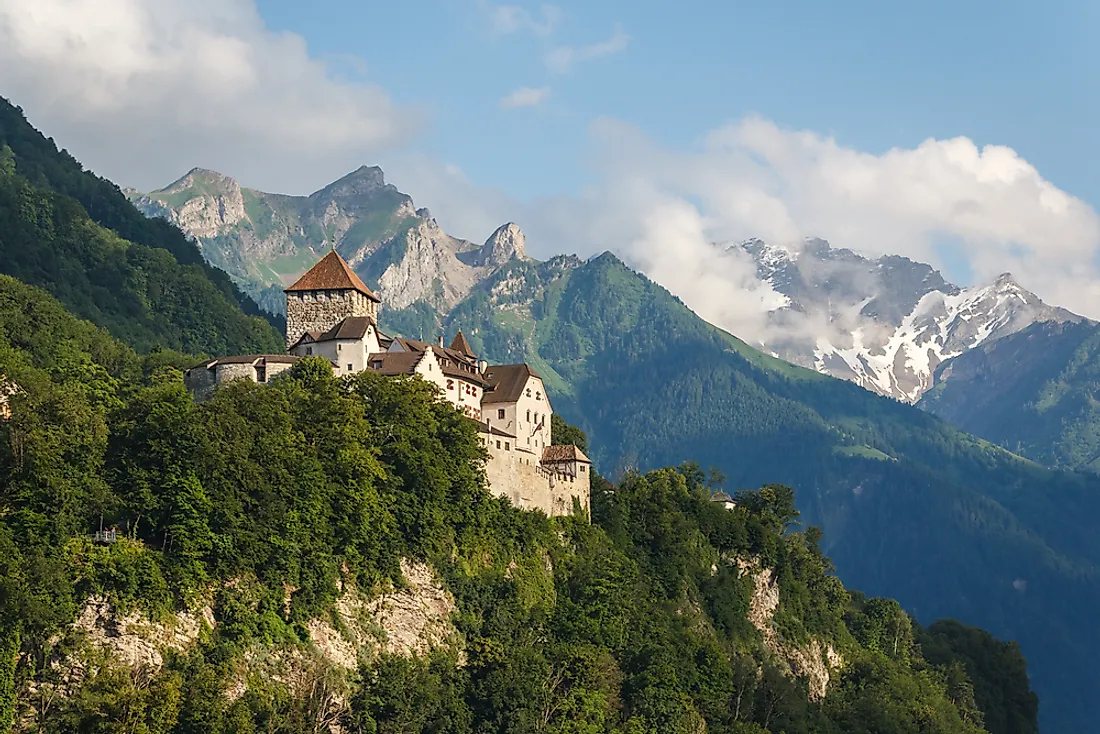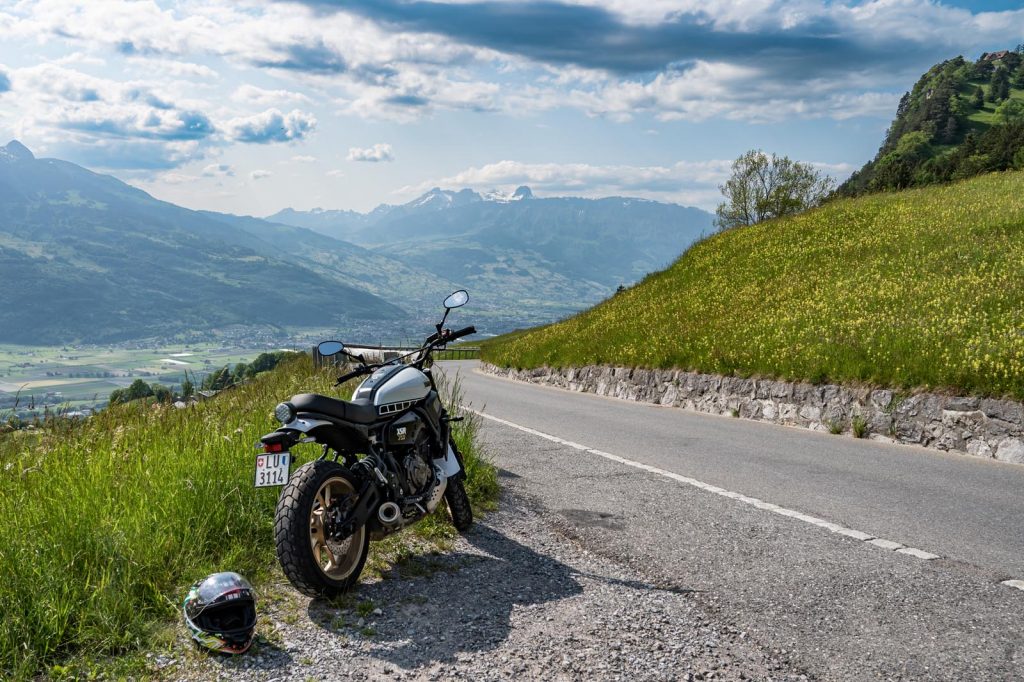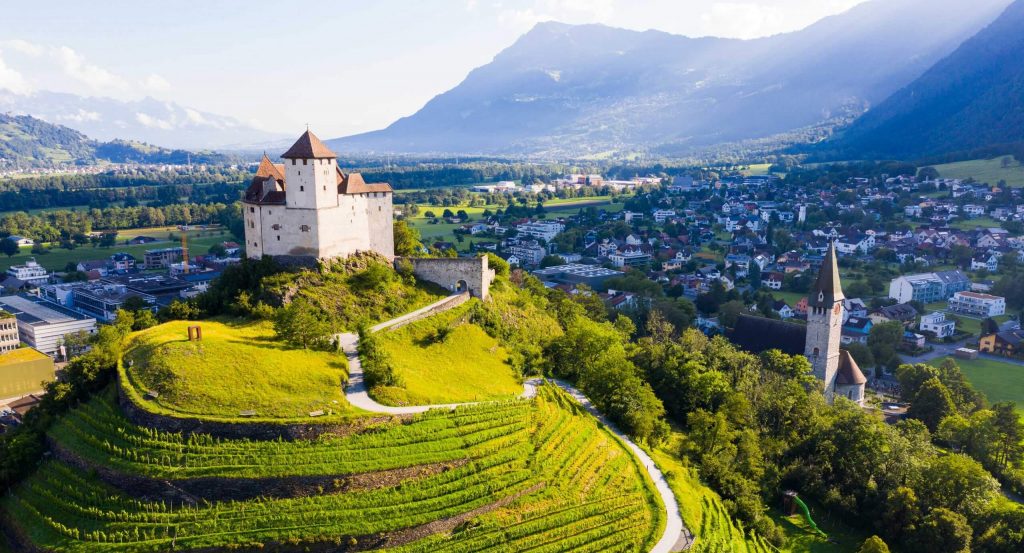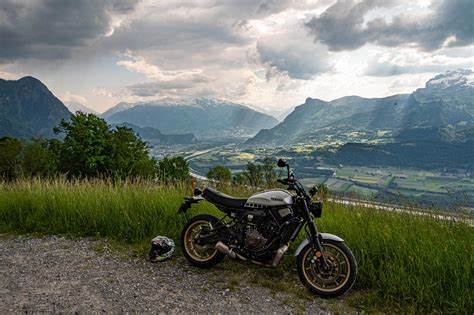Rides

Liechtenstein is a doubly landlocked German-speaking microstate in the Central European Alps, between Austria in the east and north and Switzerland in the west and south. Liechtenstein is a semi-constitutional monarchy headed by the prince of Liechtenstein of the House of Liechtenstein. It is Europe’s fourth-smallest country, with an area of just over 160 square kilometres (62 square miles) and a population of 40,023. It is the world’s smallest country to border two countries, and is one of the few countries with no debt.
Requirements
| Carnet de Passage | no requirements |
| Insurance | UK issued Green Card |
| International driving permit | not required |
| Travel Visa | no requirements, 90 days within a 180 day period |
| Other requirements | International Certificate for Motor Vehicles |
Riding in Liechtenstein
You need understandable documents.
As a tip, it is to laminate all of your key documents or otherwise waterproof them. It is also highly recommended to scan all your original documents and email them to an easily accessible email address.
It is also worth printing off the Constat Amiable D’accident Automobile, which is used across numerous and other countries (the downloadable one on our website has English as well as French).
Driving license and passport must be carried.
Aside from the documents above, there are some legally-required items you must bring with you to drive in Liechtenstein.
You must also.
- Be over 18
- Make sure everyone in the car wears a seat belt at all times
- Wear a crash helmet if you’re riding a motorcycle
- Use dipped headlights when driving through tunnels – and it’s recommended you use them the rest of the time too
- Ensure your car is covered by third-party insurance recognised in Liechtenstein. This is the legal minimum cover for residents and visitors, so check with your provider before you travel
Mandatory equipment.
Helmets are mandatory.
You also need to have your license and vehicle registration certificate with you at all times, as well as your ID card or passport.
Although you won’t get a ticket if you do not have a first-aid kit or a high-visibility vest, it is recommended that you still have those, for your own safety.
UK sticker.
Unless your headlights can be adjusted, it’s a legal requirement to carry headlamp converters (stickers for your headlights when driving on the right, so your lights don’t dazzle motorists coming the other way).
A warning triangle is also compulsory to carry in vehicles in case of a breakdown.
Rules of the road.
- If you’re taking your own vehicle to Liechtenstein, you should apply for an International Certificate for Motor Vehicles (ICMV) which you will need to carry as well as the original vehicle registration document
- In Liechtenstein, you drive on the right and overtake on the left. Pedestrians generally have right of way
- When overtaking, you must indicate before moving back into the right-hand lane
- During the day, you must sound your horn before going round a sharp bend with limited visibility. At night, flash your headlights instead
- You won’t have to pay motorway tolls in Liechtenstein, but if you venture further afield you might have to pay them in the neighbouring countries, Austria and Switzerland
- Petrol and diesel are readily available, along with a lead-replacement additive. If you need LPG, it’s sold in Switzerland
- If you’re caught committing a motoring offence while driving through Liechtenstein, you’ll be given an on-the-spot fine
- The drink-drive limit is 0.08%. The police can ask any driver to undergo a breath test
- If you have a GPS navigation system that shows you where any fixed speed cameras are, you must deactivate this function. It’s illegal to use any radar detection equipment
Speed limits.
Built up areas: 31 mph (50 kph).
Open roads: 50 mph (80 kph).
Motorways: 75 mph (120 kph).



Please note, this page was correct when written in January 2025.
